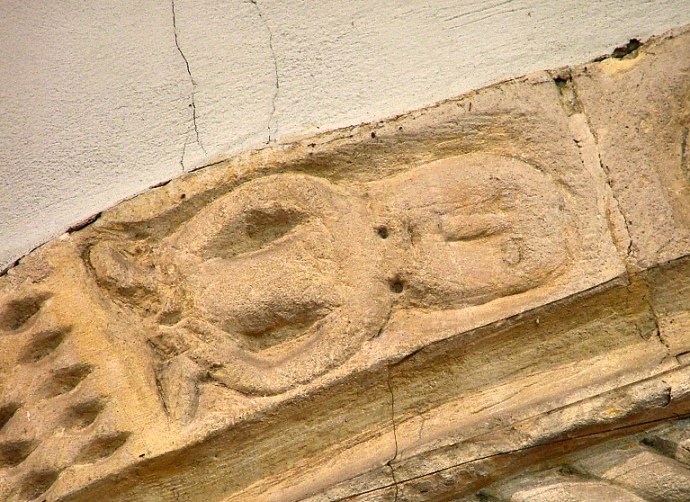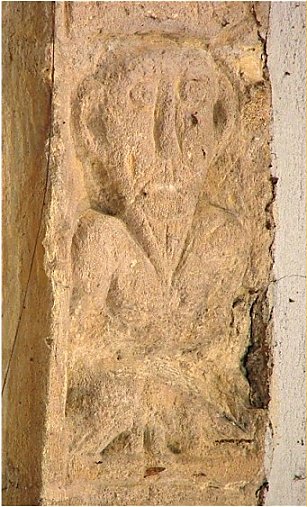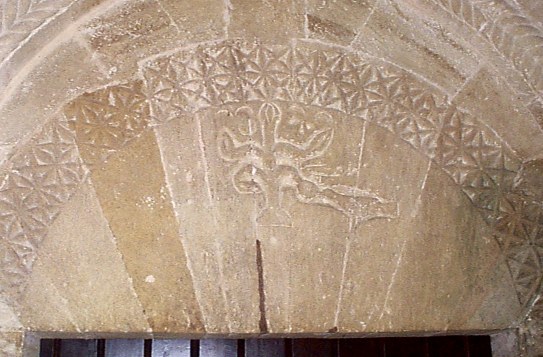Contents

The Figures
The church of St Mary’s at Lower Swell in the Cotswolds contains a fine norman archway which holds a crude Sheela Na Gig and and a possible exhibitionist male.
The figure is to be found on the left side of the arch. The figure has a large head and left hand points to a small but definite cavity between the legs (see right). There are many other carvings including a hare and what appears to be a man battling with snakes. In addition to the sheela on the arch there also appears to be an exhibitionist male figure on a pillar on the left of the arch (below). The figure does not have clearly defined genitals but there does seem to be some suggestion of something there as you can see. This is another example of the difference in degree of exhibitionism seen in Romanesque carvings. While this figure lacks the overt exhibitionism of say Kilpeck it nevertheless has had a small vulva carved and even seems to be indicating to it in much the same way as the Oaksey example.
The male figure also seems to have inscribed ribs, a feature normally though not exclusively ascribed to sheelas. The pillar opposite the male figure shows some sign of defacing or is unfinished so there is a possibility that another figure originally faced the male figure. (See right).
The church itself is quite small but boasts some rich carving. There are corbel heads on the outside of the church which are very reminiscent of Kilpeck. The connection to Herefordshire carvings is further borne out by the tympanum above the front door which depicts a tree motif, usually referred to as “The Tree of Life”. Tympana bearing trees are a feature of the Dymock School in South Herefordshire. However the tree is not a particularly well carved specimen unlike the Herefordshire and Dymock examples. In addition to the tree a bird is depicted eating the tree’s single fruit. In his book “The Herefordshire School of Romanesque Scupture” Malcom Thurlbury suggests an origin for this tree motif from the medieval “Bestiary” which he cites as an often used source for church sculpture.
“The perindens is a tree found in India; the fruit of this tree is very sweet and pleasant, and doves delight in its fruit and live in the tree, feeding on it. The dragon, which is the enemy of doves, fears the tree because of it’s shade in which the doves rest and it can approach neither tree nor shadow.”1 The Bestiary then goes on to give a religious interpretation of the various symbols in the passage and how they relate to Christian practice. As we can see from the above quote it is obvious that the sculptor took his inspiration from the above passage. In addition to the tree motif the tympanum is also bordered by a repeated X cross pattern which also associated with other churches of Marches2

